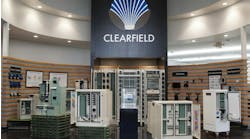Advanced Microgrid Solutions (AMS) plans to store energy from fleets of buildings that can act as peaker plants on the grid, under a contract it won this week with Southern California Edison.
The new company was among nine firms selected November 5 by the utility in a solicitation that netted 2, 221 MW in long-term capacity contracts, more than 500 MW of that from ‘preferred resources’ – energy storage, demand response, energy efficiency and renewables. (See related story.)
SCE awarded the start-up a power purchase agreement to develop 50-MW of storage in what AMS is calling one of the world’s first grid-scale fleets of ‘hybrid-electric buildings.’
“Edison is changing the game with this investment in ‘customer-sited’ energy storage,” said Susan Kennedy, AMS founder and CEO. “By harnessing the power of energy demand in commercial buildings, SCE is turning its largest energy users into its cleanest, most efficient grid resource.”
The system will be installed in commercial and industrial buildings, each equipped with state-of-the-art battery technology and advanced energy management software. The company will aggregate the buildings into fleets that can act as a single grid resource. SCE will be able to call upon a fleet’s stored energy during periods of high demand.
“Equipping a building with the technology to store and manage its own electricity turns that building into a stand-alone storage unit. Combine a dozen buildings into a fleet, and you have the utility equivalent of a peaker plant. This “dual-use” approach lowers costs for building owners and provides a clean, cost-effective resource for utilities,” Kennedy said.
By installing storage directly at the load center, the system “builds resiliency into the electric grid from the foundation up,” said AMS co-founder Jackie Pfannenstiel. SCE customers gain “greater reliability and lower costs” and the utility gains firm, dispatchable load management.
The company’s technology isn’t its only unique feature. AMS is a woman-owned energy company, a rare entity in the industry. As such, AMS plans to donate a portion of the proceeds from its projects to a micro-lending fund for women, minority and veteran-owned businesses.
Kennedy is former chief of staff to Governor Arnold Schwarzenegger. Pfannenstiel is former assistant secretary of the Navy (Energy, Installations & Environment) for President Obama.
AMS plans to install the first 10-MW Hybrid-Electric Building project in Irvine, California in fourth quarter 2016.






